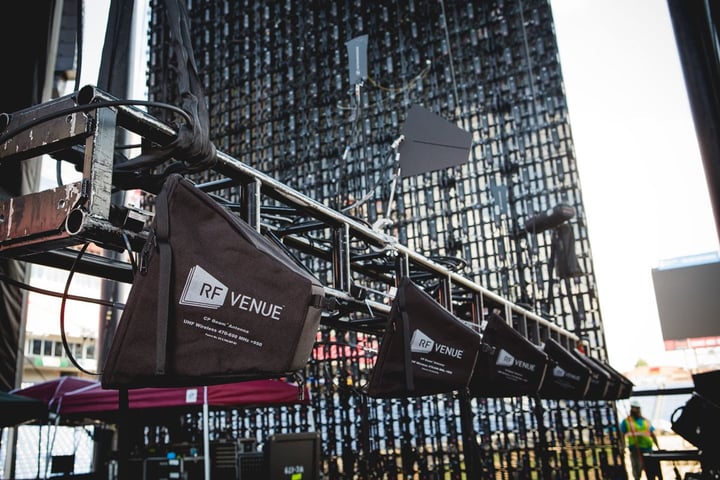Confident Wireless in Any Environment.
We design and build specialized antennas and distribution to make wireless mics and IEMs work and sound better. That’s all we do. Wireless can be challenging. So we focus on plug and play products that give you confidence your wireless systems will work every time - with no wireless expertise needed!
RF Venue Products
RF essentials to improve your existing wireless systems.
Award-Winning Innovation
CP Stage Wins Best of Show at InfoComm 2025
Recognized for outstanding wireless performance and design, the CP Stage Antenna is trusted by AV pros who demand reliability—no matter the environment.

Make Sure Your Wireless System's Ready for Summer
Book a FREE! 30-minute sound system check with an RF Venue expert. We'll review your setup, flag potential issues, and help you hit the busy season with confidence- no pressure, no pitch
Unlock Wireless Audio Expertise
Struggling with wireless microphone dropouts, poor antenna placement, or RF interference? Our eBooks are packed with expert advice on optimizing wireless audio systems for clearer, more reliable performance. Whether you're managing a live sound rig, a house of worship, or a broadcast setup, our guides will help you reduce signal issues and improve your RF reliability. So, if you're new to RF or a seasoned pro, these resources are packed with practical tips to help you get the most out of your gear.
Download our recent eBooks below, and be sure to explore our full selection to take your wireless system to the next level.

Antennas and Antenna Placement for Wireless Audio, Explained and Demystified
Novice wireless users tend to either underthink or overthink — even agonize over — their antenna decisions. If you operate or are responsible for a wireless audio system — wireless mics, in-ear monitors (IEMs), or both — you need to understand some core antenna concepts
Download eBook
Cracking the Code: Conquering Wireless Drop Outs
This guide unveils the reasons behind frustrating signal dropouts with wireless microphones and in-ear monitors (IEMs). Most importantly, this guide equips you with practical solutions for clear, confident wireless in your venue.
Download eBook
Three Essential Concepts in Wireless Audio
Remove the mystery of RF and helps you better operate your wireless system. You've heard of 'signal to noise' - now you'll know why it's so important to understand with your wireless systems.
Download eBookStart with RF Venue Performance Tools
Check your performance or build your system with our free tools.
Solutions by Venue
RF Venue makes products to increase reliability for any venue.
RF Venue by the Numbers
Why RF Venue
With over 35,000 installations, RF Venue builds wireless essentials - that’s all we do.
-
Confidence in Your Performance
Unmatched Reliability
We prioritize providing our clients with unparalleled confidence in their wireless audio systems. Our solutions are engineered to minimize the risk of dropouts and interruptions that can disrupt critical events. Whether you’re an end user, installer, or audience member, our products instill peace of mind, knowing that your wireless audio will continue to deliver in any environment.
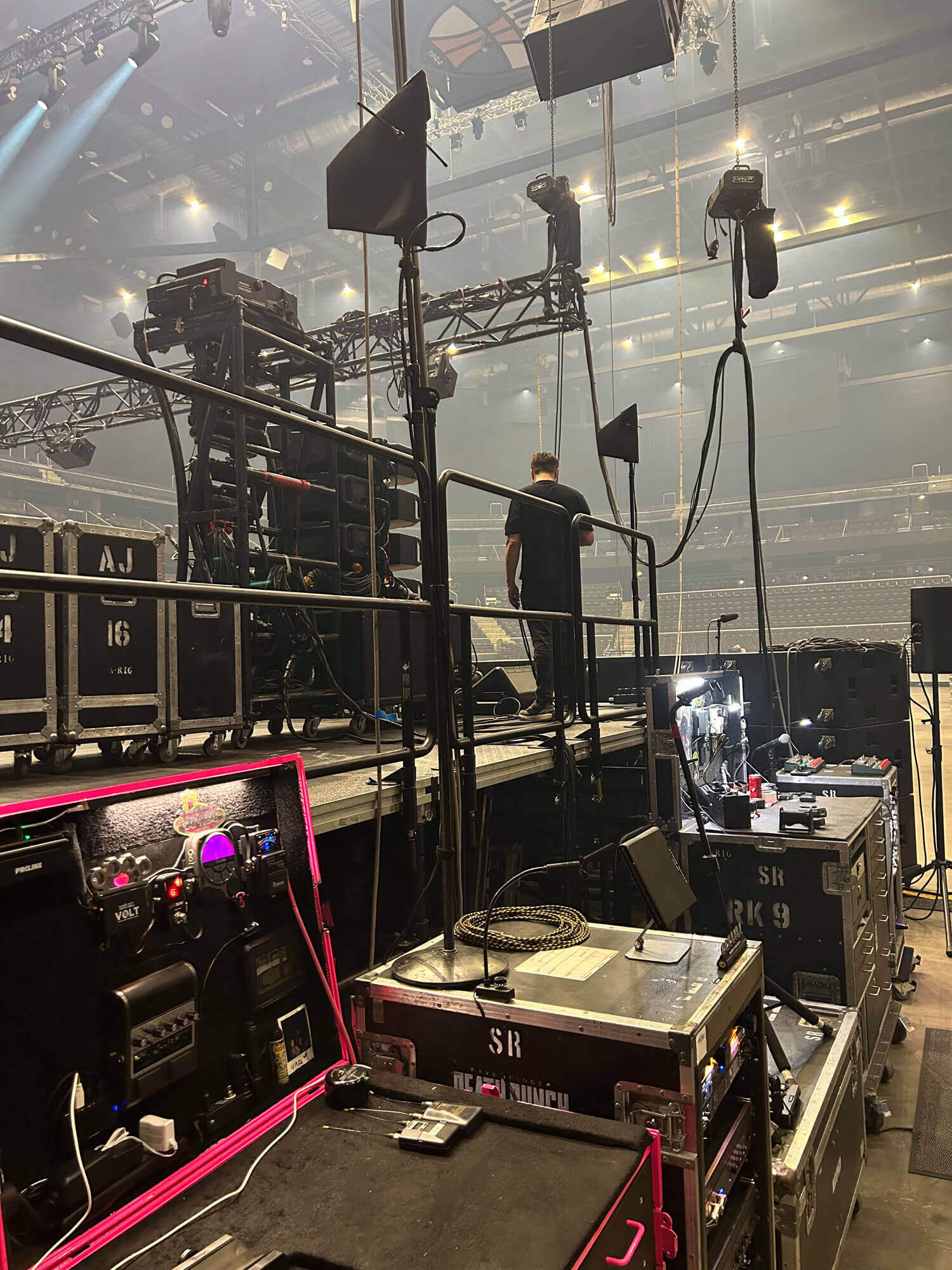
-
Expertise & Dedicated Support
Know How & Approachability
Our team of experts brings a blend of technical proficiency and caring dedication to every project, ensuring that our clients feel supported and empowered. Whether you’re a sound designer, technical engineer, project manager, or small business owner, we’re invested in your success and committed to providing the guidance and tools you need to excel in your audio endeavors.
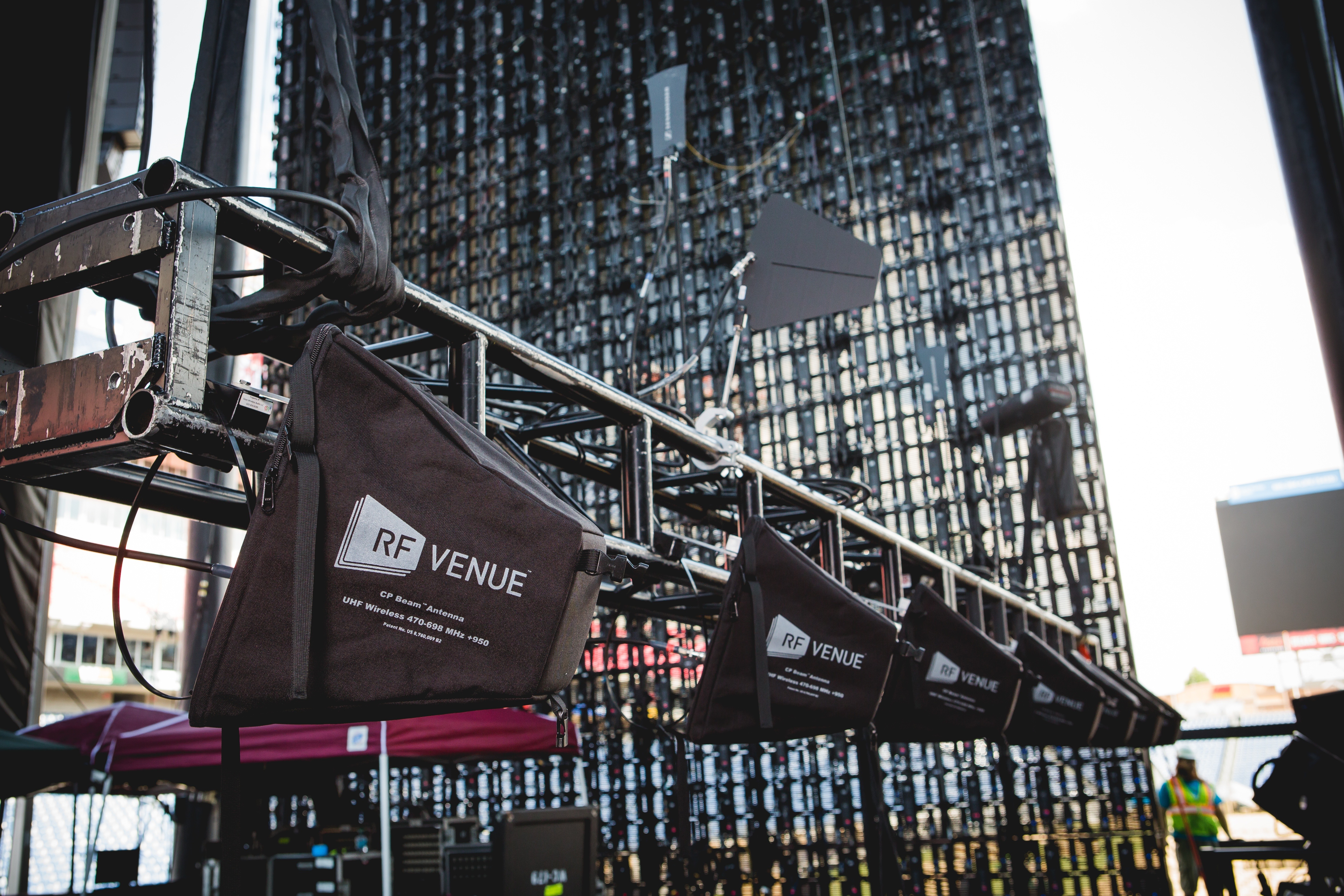
-
Cost-Effective Products and Installation Costs
Get it right the first time
We focus on products that cost less and work better. Our products are easier to install and work the first time. Most importantly, when installing a complex wireless microphone and in-ear monitor system, our customers want to be sure they get it right the first time - which is why our customers continue to work with RF Venue (again and again).
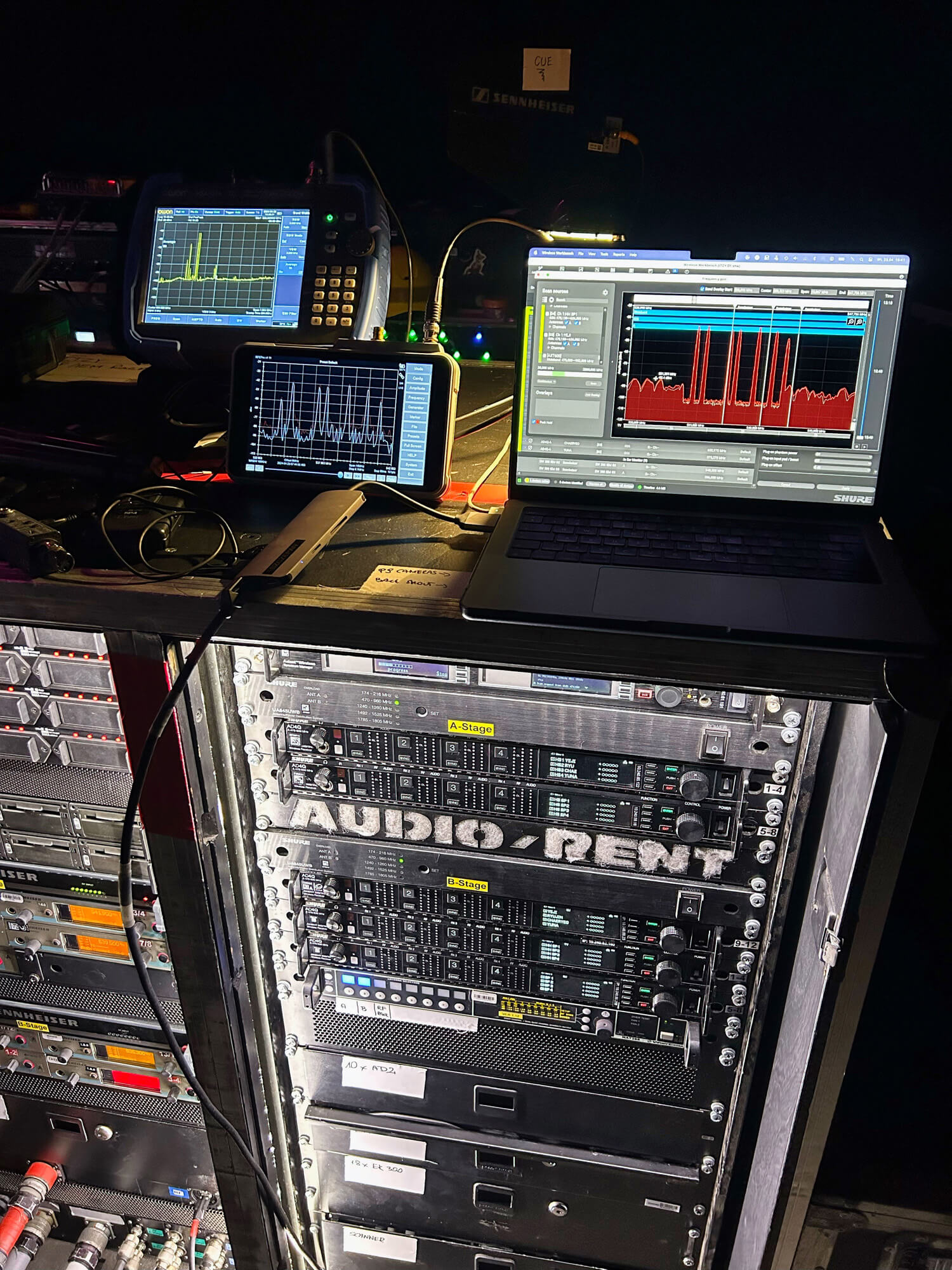
Unmatched Reliability
We prioritize providing our clients with unparalleled confidence in their wireless audio systems. Our solutions are engineered to minimize the risk of dropouts and interruptions that can disrupt critical events. Whether you’re an end user, installer, or audience member, our products instill peace of mind, knowing that your wireless audio will continue to deliver in any environment.

Know How & Approachability
Our team of experts brings a blend of technical proficiency and caring dedication to every project, ensuring that our clients feel supported and empowered. Whether you’re a sound designer, technical engineer, project manager, or small business owner, we’re invested in your success and committed to providing the guidance and tools you need to excel in your audio endeavors.

Get it right the first time
We focus on products that cost less and work better. Our products are easier to install and work the first time. Most importantly, when installing a complex wireless microphone and in-ear monitor system, our customers want to be sure they get it right the first time - which is why our customers continue to work with RF Venue (again and again).

“We are big fans of RF Venue! Great products and great customer service. We're developing a new relationship with a client and we've been asked to provide more RF Venue products for their system. We keep a Diversity Fin on hand at all times for this very reason.”
Todd Cromwell, Skylark
“Love the products. Especially, in my market... the CP Beam. We offer it to our touring clients in lieu of a traditional helical antenna, which requires a large case to transport. The CP Beam collapses for easy transport. Saves the band a great deal of money, and hassle over time. More importantly, it works great!!!”
Lance Wascom, Tour Supply Inc.
“I really appreciate the phone call. That's incredibly rare these days. The information I received was very helpful and I've been able to better optimize my wireless networks. Thank you so much! ”
Paul Childs, Peak AV
“The RF Venue training did an excellent job of presenting the products and, more importantly, demonstrating WHY their products are important to use. After the training, I am certain that I will be recommending and using RF Venue in more, if not most, applications. Undoubtedly, they are the correct tool for the job.”
Brian Grant, Washington Professional Services
“The very knowledgeable team at RF Venue are extremely dedicated to providing quick technical support. It's rare to find manufacturers that are this dedicated to backing up their customers and providing training whenever requested. ”
Colin Quek, Loud Technologies Asia
Watch Our Latest Webinar
The Latest From Our Blog

How to Network the RF Explorer Pro for Smarter Wireless Audio Monitoring

Why CP Stage Took Home InfoComm Best of Show—and What That Means for You
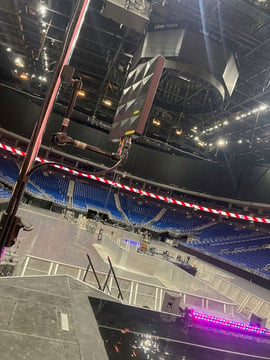
RF Venue wireless audio essentials tour Europe with RF-Alliance
Work with RF Venue
RF Venue users already work with all the gear that you use. You should work with us too.

